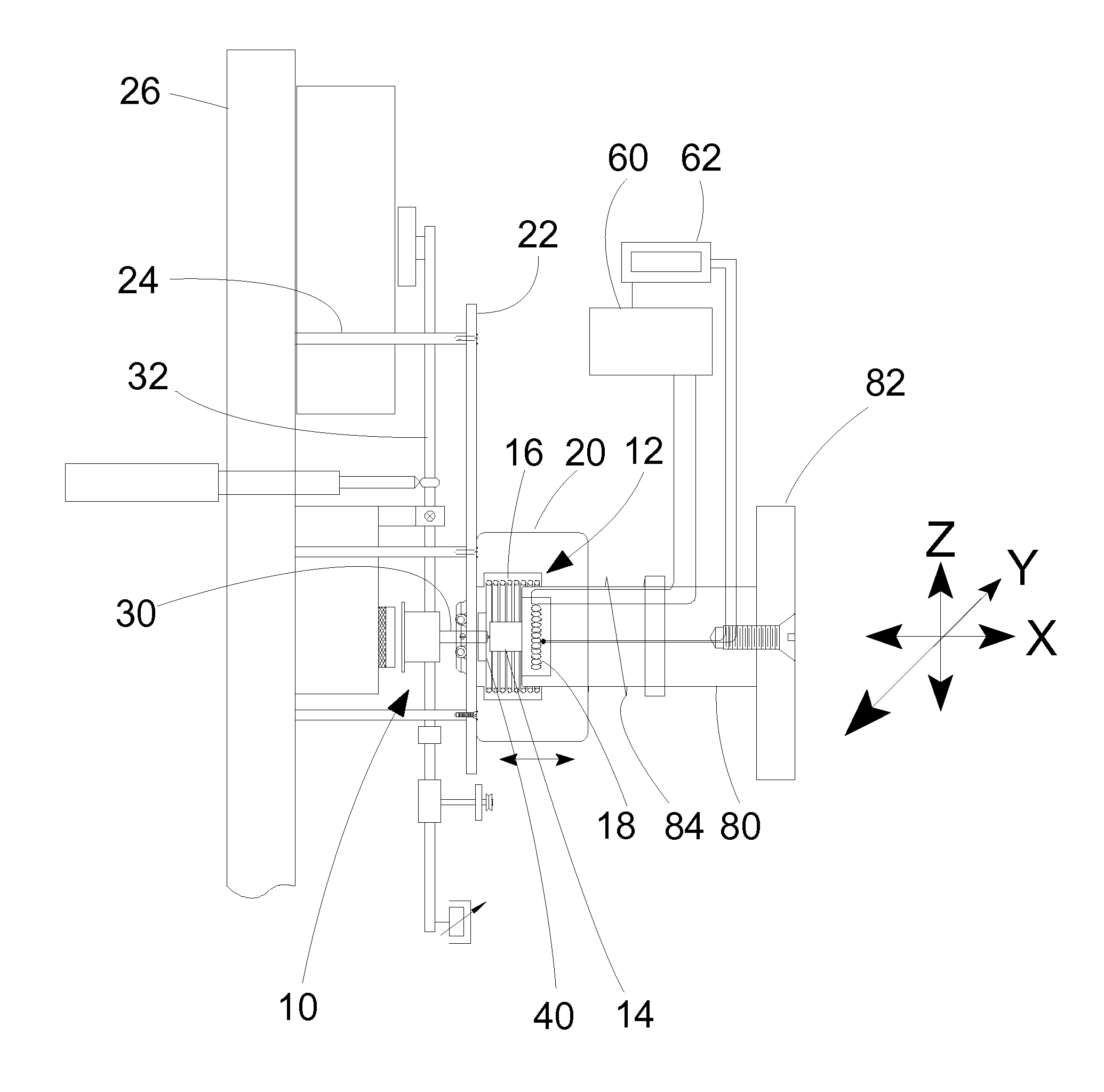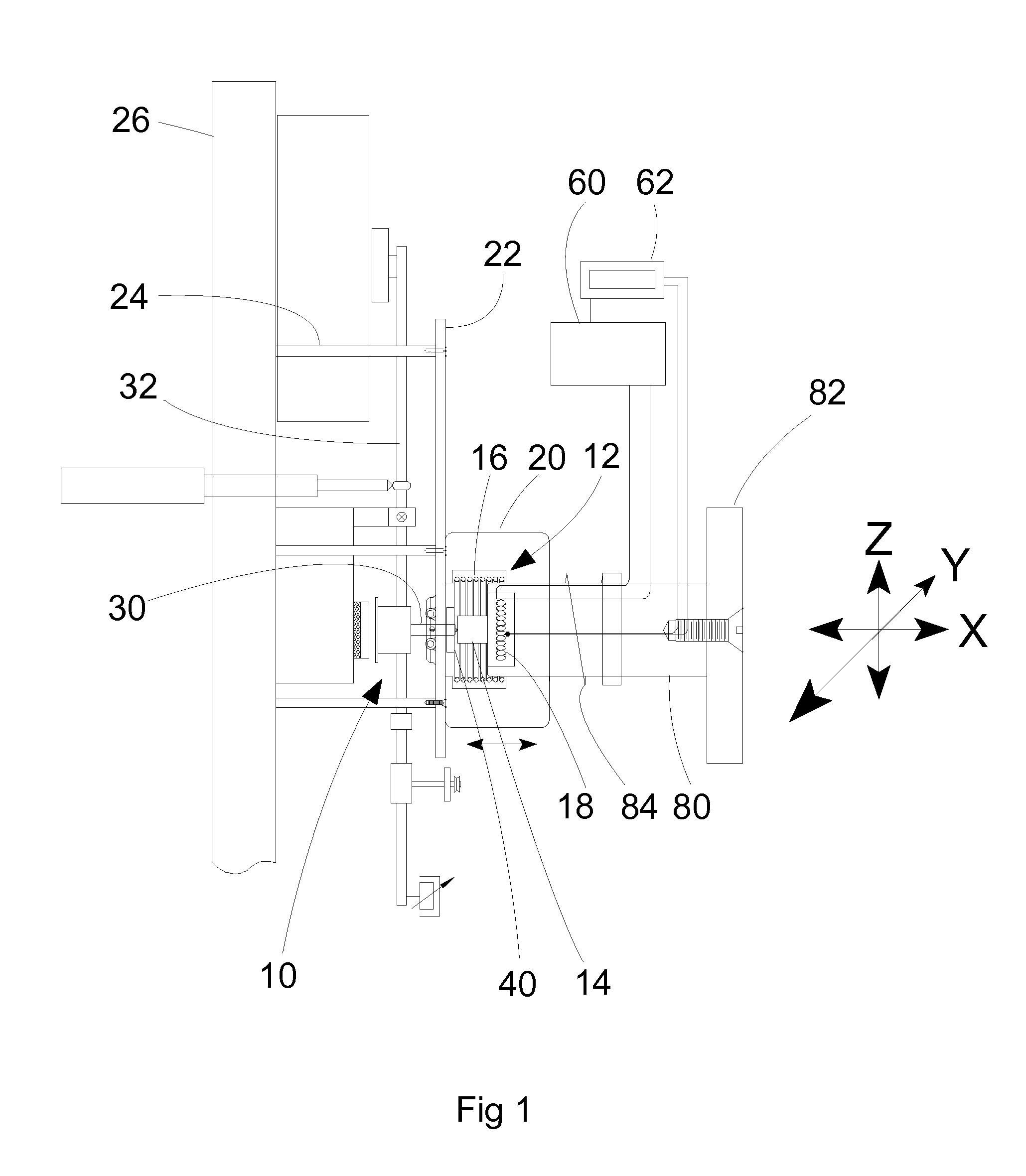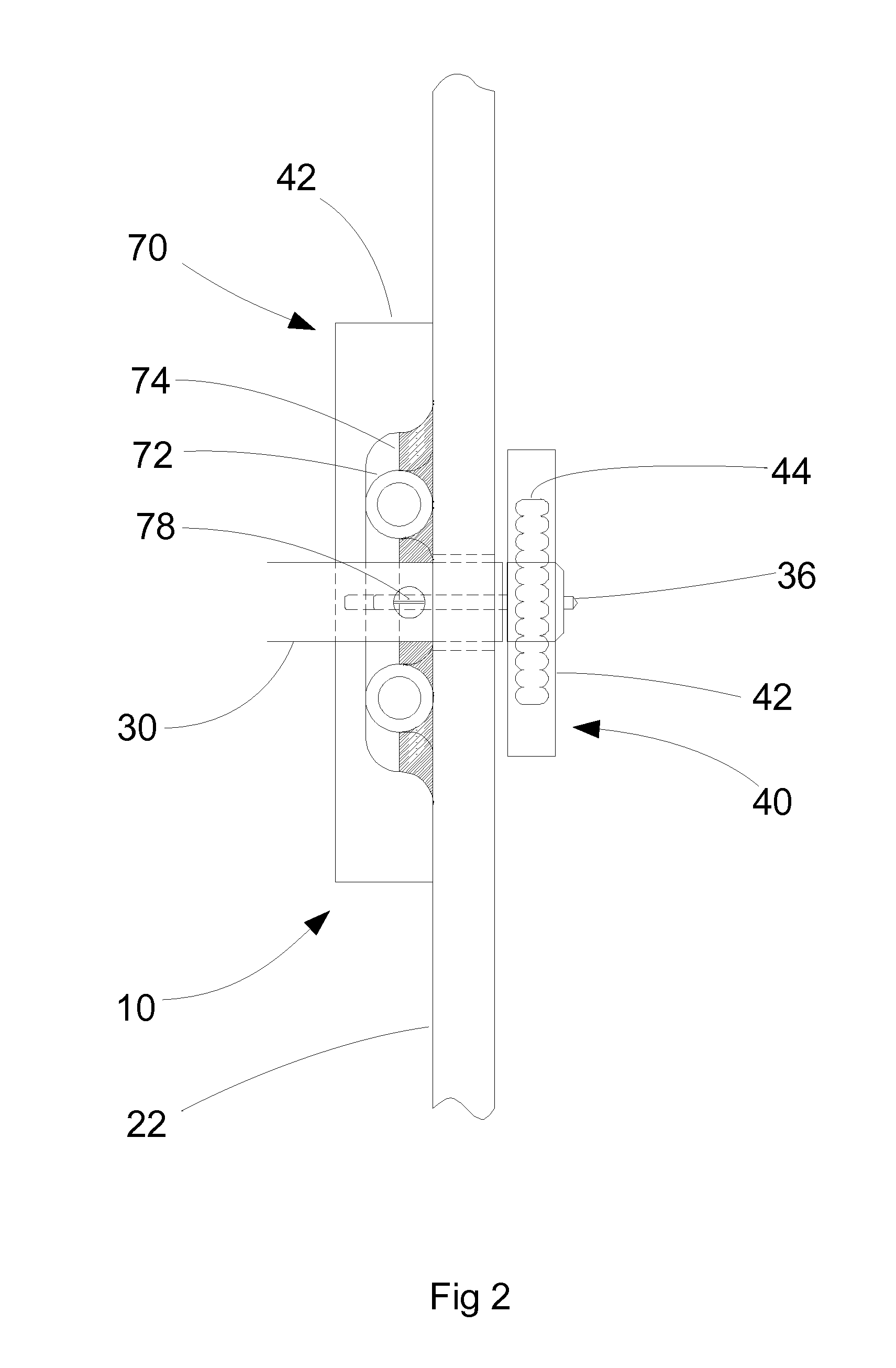Heating in material testing apparatus
a technology of material testing and heating, which is applied in the direction of process and machine control, instruments, and reradiation, etc., can solve the problems of relatively low thermal conductivity of samples, particularly susceptible to errors, and testing at elevated temperatures. relatively difficult, and the technique of moderate temperatures
- Summary
- Abstract
- Description
- Claims
- Application Information
AI Technical Summary
Benefits of technology
Problems solved by technology
Method used
Image
Examples
Embodiment Construction
[0034]With reference to FIGS. 1 and 2, test apparatus embodying the invention comprises two main sub-assemblies: a pendulum that carries a probe assembly 10 and a sample carrier assembly 12 that carries a sample 14 to be tested on a support 80. The support 80 is connected to a mounting plate 82, which is a standard shape and size for connection with a conventional 3-axis stage. In this example, the sample is heated by electrically-operated resistive heating elements 16, 18. The carrier assembly 12 and the sample 14 are within a void formed within a ceramic, thermal enclosure 20 also carried on the support. The enclosure 20 can slide on the support 80 independently of the sample and the heating elements 16, 18 in a direction that is parallel to the motion of the carrier assembly 12.
[0035]In operation, the probe assembly is moved repeatedly with respect to a sample such that either the probe repeatedly impacts with the sample or such that the probe remains in contact with the sample a...
PUM
| Property | Measurement | Unit |
|---|---|---|
| temperature | aaaaa | aaaaa |
| temperatures | aaaaa | aaaaa |
| temperature | aaaaa | aaaaa |
Abstract
Description
Claims
Application Information
 Login to View More
Login to View More - R&D
- Intellectual Property
- Life Sciences
- Materials
- Tech Scout
- Unparalleled Data Quality
- Higher Quality Content
- 60% Fewer Hallucinations
Browse by: Latest US Patents, China's latest patents, Technical Efficacy Thesaurus, Application Domain, Technology Topic, Popular Technical Reports.
© 2025 PatSnap. All rights reserved.Legal|Privacy policy|Modern Slavery Act Transparency Statement|Sitemap|About US| Contact US: help@patsnap.com



